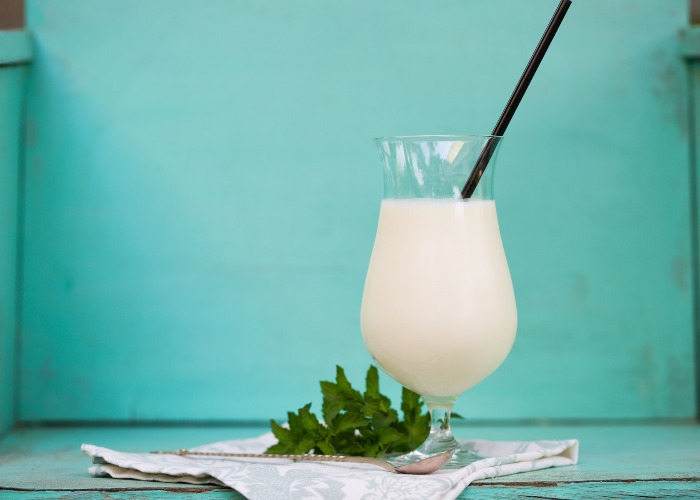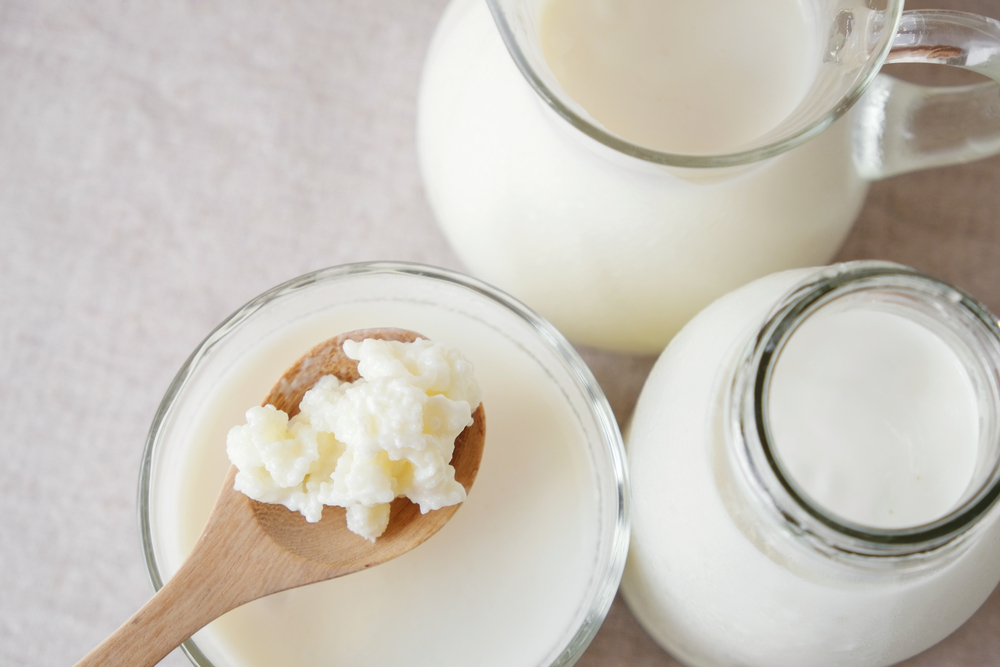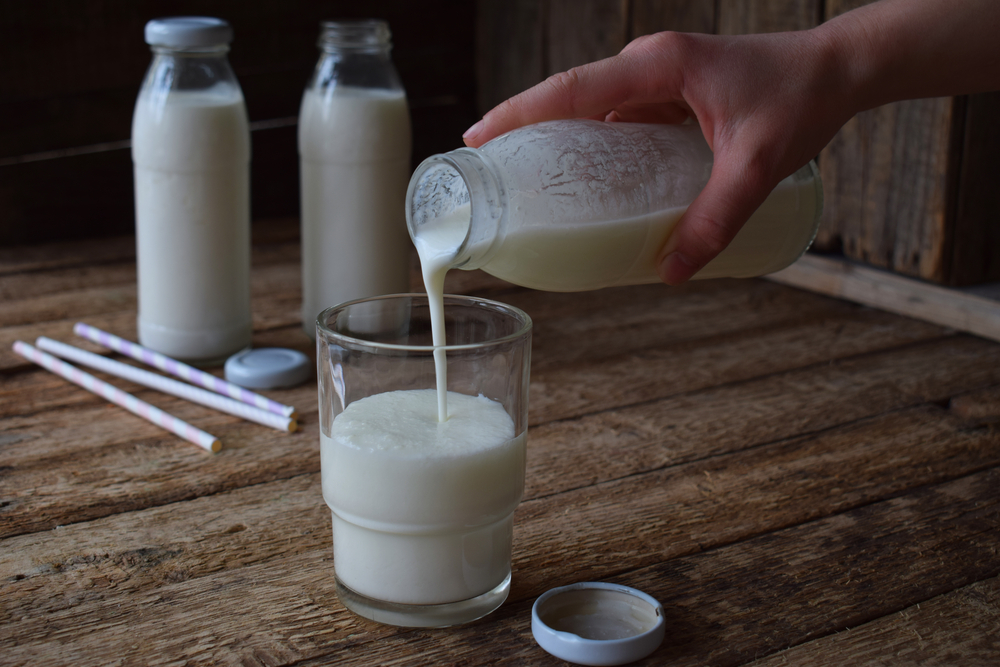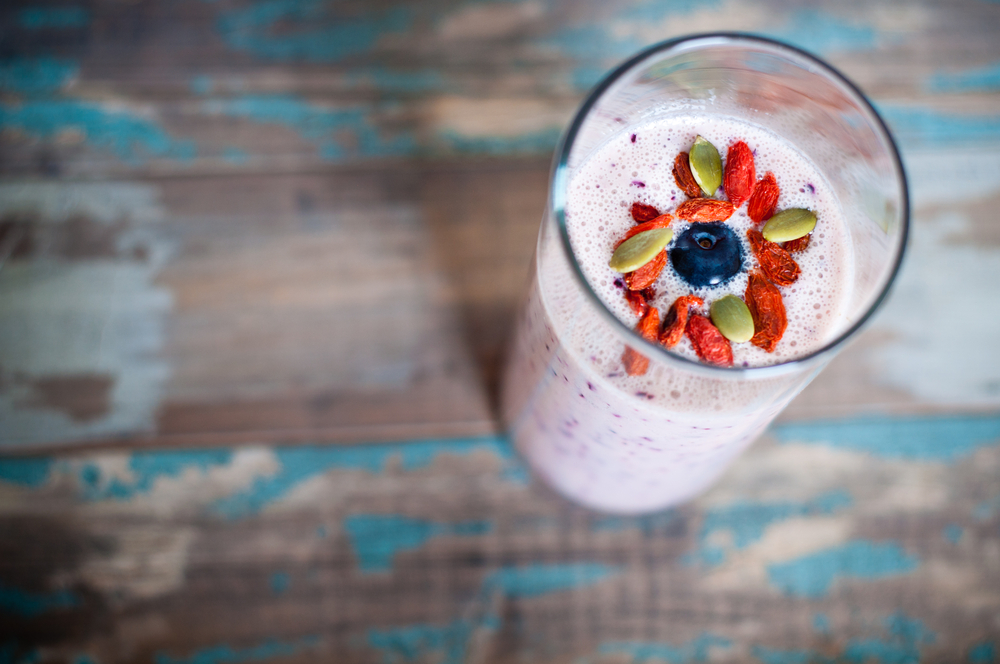Everything you wanted to know about kefir

Megan Carnegie finds out why this fermented milk drink is suddenly skyrocketing in popularity.
While fermented foods like sauerkraut, kimchi and kombucha have long had their moment in the limelight, one particular milk-based drink is only just kicking off in Western Europe. The fermented yogurt-like beverage kefir is now cropping up everywhere from restaurant menus to supermarkets.
What is kefir?
It’s a cultured, fermented milk drink, traditionally made using cow's or goat’s milk. Although it has some similarities to yogurt, it is much thinner and more drinkable, with a tart, sour taste and a slightly ‘fizzy’ flavour that comes from the carbon dioxide in the fermentation process.
It is made by adding kefir “grains” to milk – these resemble small florets of cauliflower and are cultures of yeast and lactic acid bacteria.
Kefir is rich in probiotic bacteria, containing 47 different strands; yogurt contains just one or two. It has high levels of calcium, phosphorus, vitamins and minerals. There is evidence to suggest it aids lactose digestion, making it a good choice for those with an intolerance.
It can also be made with sheep's, coconut, rice or soy milk.
 SewCream/Shutterstock
SewCream/Shutterstock
What are the origins of kefir?
Kefir is centuries old and originates from the Caucasus, the region that divides Asia and Europe. Nomadic shepherds used to carry milk in their leather pouches and soon found it had fermented, turning creamy, sour and grainy.
The word supposedly comes from the Turkish “keif” which means good feeling and is associated with general well-being. Indeed, kefir is often referred to as the ‘champagne of milk’.
Wide-scale commercial production of kefir began in Russia in the 1930s and it is now widely consumed throughout Eastern and Central Europe. In some countries it is given to primary school children to help them concentrate, as well as to the elderly and those recovering from illness. It is also said to be an excellent hangover cure.
 Oksana_Slepko/Shutterstock
Oksana_Slepko/Shutterstock
What should I buy?
Traditionally kefir is sold as a drink, but more recently kefir milkshakes and yogurts have come onto the market.
You can find kefir in the dairy or yogurt aisle of most large supermarkets and smaller Turkish supermarkets. Some brands, like Krasnystaw and Milko (both available from Sainsbury’s), are unsweetened and sold in a variety of sizes.
Bio-tiful Dairy, a UK-based brand available from Ocado, sells a range of kefir products including baked milk kefir (with a more intense, sweeter flavour and thicker consistency), quark (a high-protein fresh cheese) and flavoured kefir with morello cherry and honey.
What else can I do with it?
Kefir's tartness makes it a good base for fruit smoothies, vinaigrettes and salad dressings. It can also be used as a leavening agent, to tenderise meat or even in baking. Try it as a substitute for buttermilk – another cultured milk-based drink with a tangy flavour.
The sour-tasting Eastern European beetroot soup borscht, particularly the Lithuanian version, requires unsweetened kefir and you can experiment with kefir as a sourdough starter.
 Smoothie CatchaSnap/Shutterstock
Smoothie CatchaSnap/Shutterstock
Can I make it at home?
Making kefir at home can be a tricky, time-consuming process, but it is possible with the right equipment. You will need to purchase kefir grains online or from a kefir producer.
These should be soaked in milk and placed in a glass jar or bowl, usually covered with a breathable cloth and rubber band, before being left to ferment at room temperature for a minimum of 24 hours. The grains can then be strained and transferred to a fresh batch of milk and used again – a cycle that in theory can be done infinitely.
Strained kefir must be refrigerated at below 5°C. If you do decide to make it, be sure you know what you're doing: it can make you ill if made incorrectly.
An easier option is to invest in a specialist kit, such as the Kefirko Kefir Maker (£24.99; 2tech.co.uk). This combined jar and strainer, with a breathable lid for successful fermentation, provides all the equipment you'll need. One teaspoon of kefir grains will ferment 250ml (8.4 fl oz) of milk every 24 hours. It is possible to keep reusing the grains – so beyond the milk and kit, you need to repurchase little else to keep the process going.
You might also like:
What are anchovies and how do you cook with them?
Everything you wanted to know about 'nduja
Header image Chinara Rasulova/Shutterstock
Comments
Be the first to comment
Do you want to comment on this article? You need to be signed in for this feature